Oxpeckers, Red and Yellow-billed
on Oct 05, 2021As you walk through the wilderness, there are certain calls and sounds you learn to take heed of. We pay special attention to the sound of branches breaking, which could be a sign of an elephant feeding, we take note of the chattering call of a squirrel or the chant of a Grey Go-away-bird as they might be alarming at the presence of a predator, and we always stop dead in our tracks when we hear the ‘chip-chirrrrrr’ of the Oxpecker.
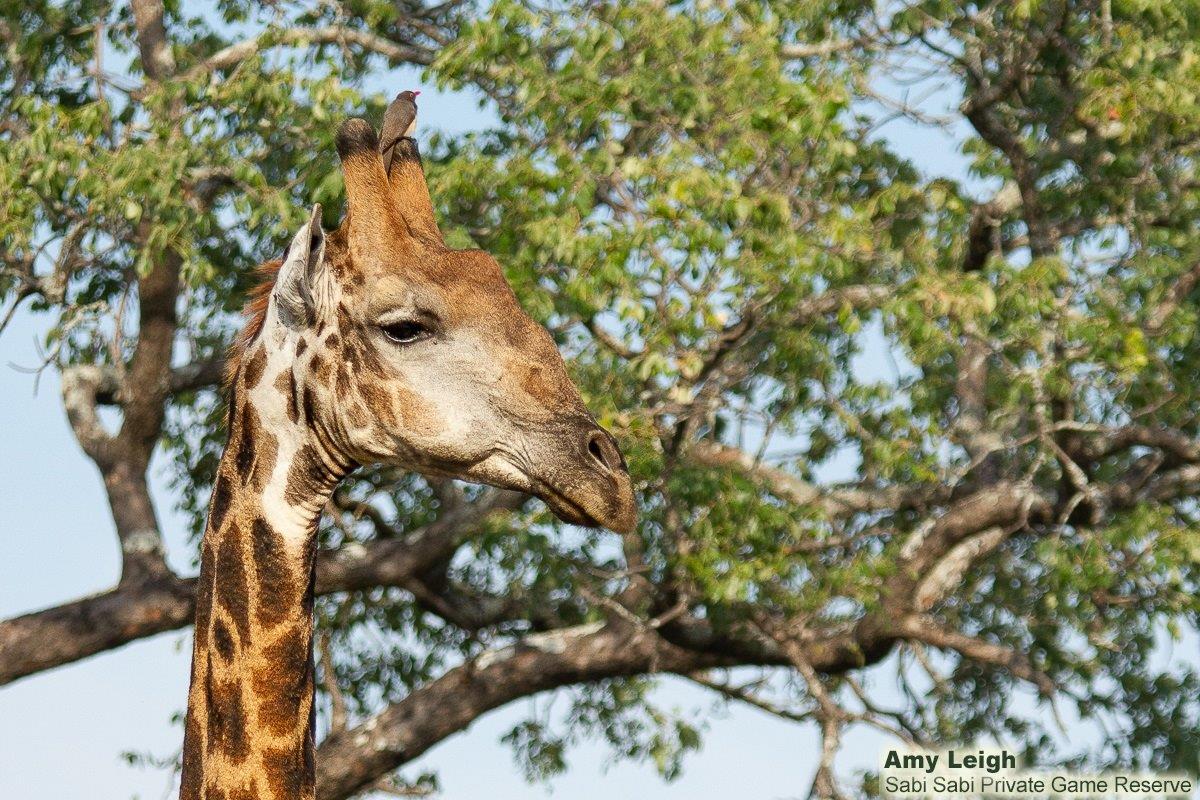
Now the Oxpecker is a bird which spends its life on the bodies of large herbivores, although one should not be surprised to see them on something as small as a warthog or impala. They can be seen on any number of species, with large flocks of them being associated with large herds of Cape Buffalo and smaller family groups can often be seen on Rhino.
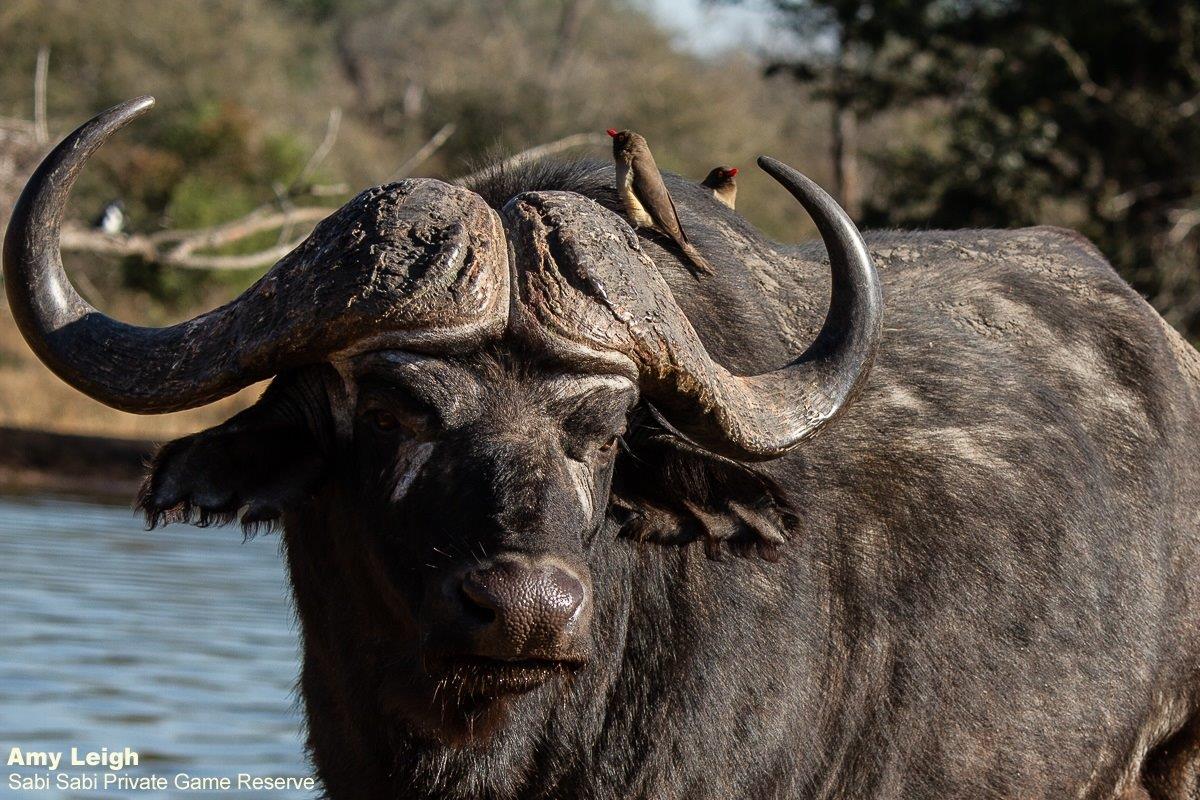
This is the reason for them being an important indicator species in the bush, they could be showing you that there are giraffe or kudu or impala nearby, but they could quite easily be a warning for larger potentially dangerous game in the vicinity, something you might appreciate being aware of before you stumble across it.
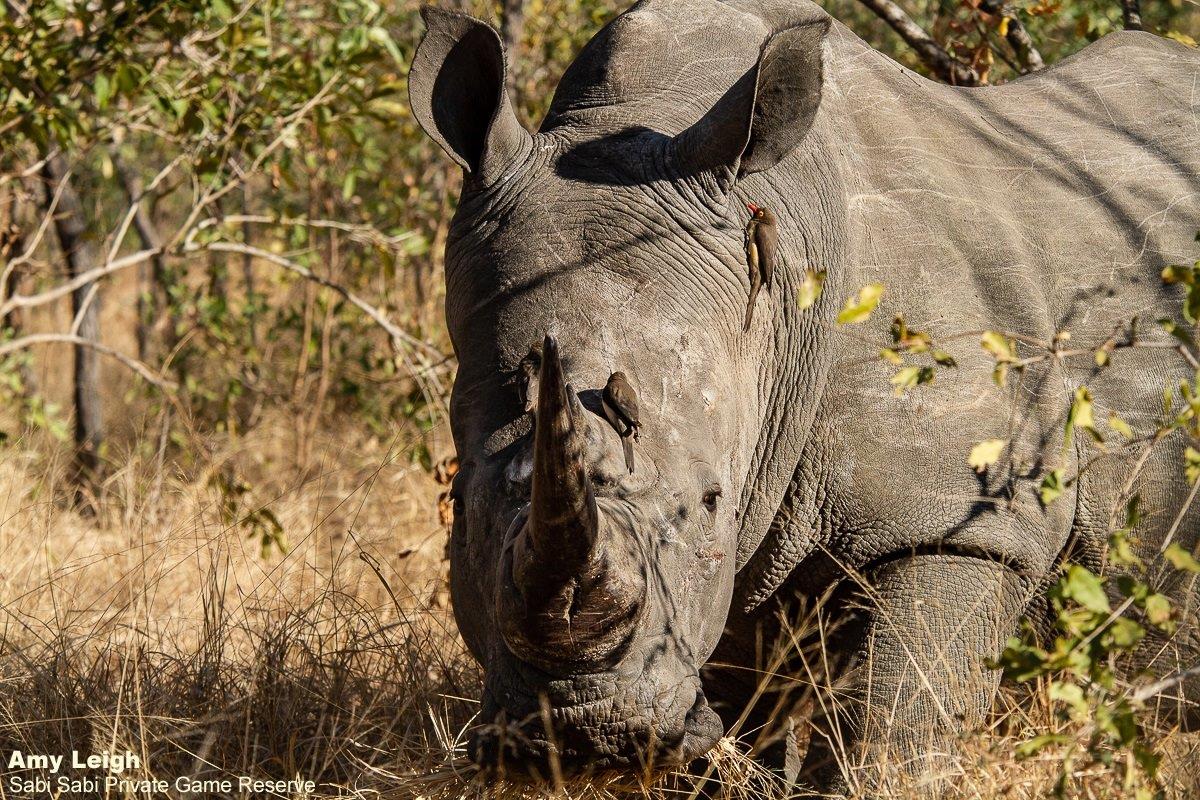
At Sabi Sabi, we see two different species of Oxpeckers, namely the Red-billed and the Yellow-billed. These two species appear quite similar at first glance, save for three main differences: the size, the bill colour and the rump colour. As the name suggests, the Red-billed Oxpecker has a bright red bill from the base to the tip, it is slightly smaller than its cousin in weight, yet not so much in height, and the plumage appears darker due to a lack of pale plumage on the rump. They also have a prominent yellow eye-ring, which is absent in the Yellow-billed.
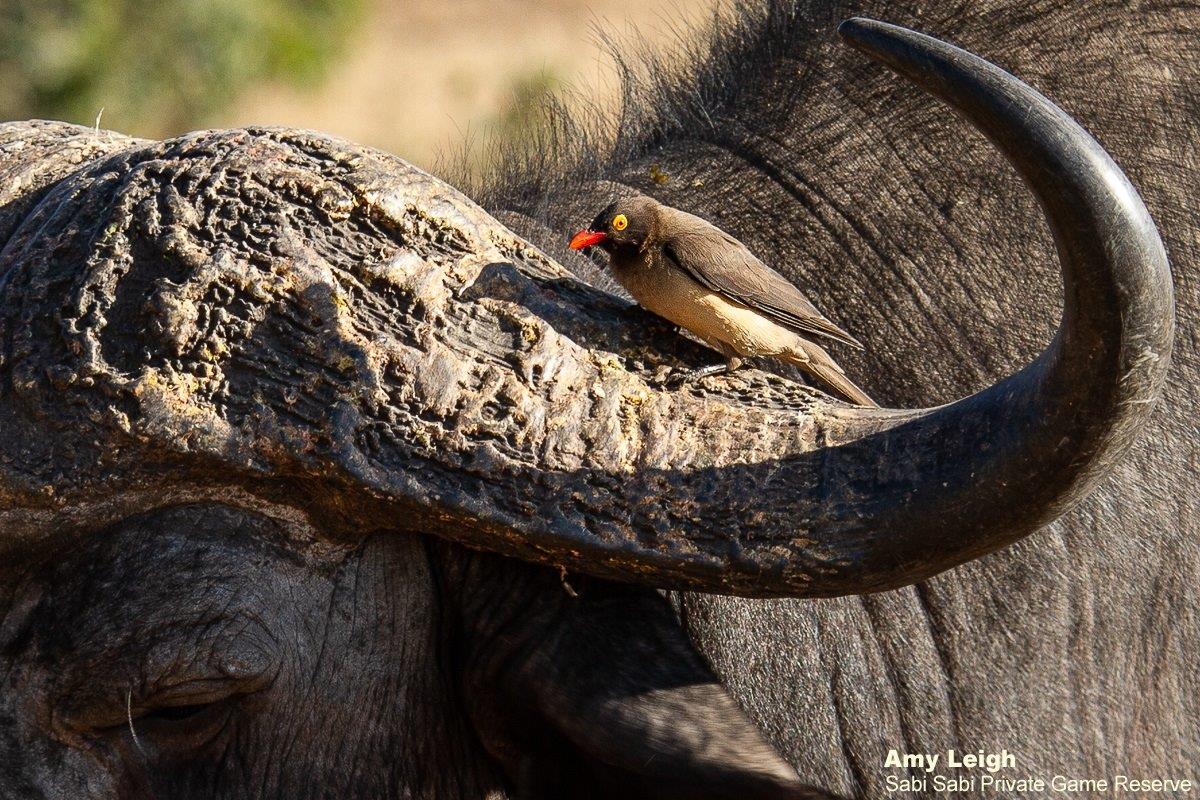
The Yellow-billed Oxpecker in comparison has a bill that is bright sunshine yellow at the base and only the tip is red, it is heavier-set than its cousin and it has pale plumage on the back between its folded wings.
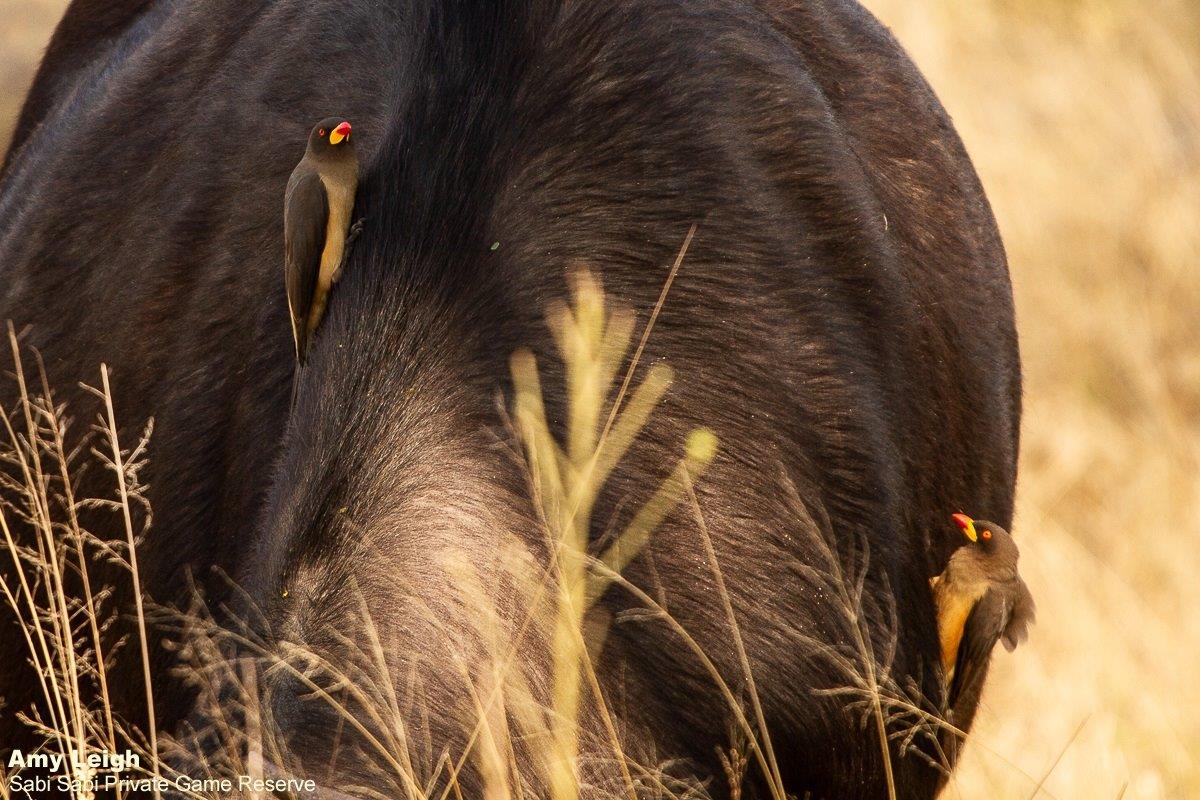
Oxpeckers are well designed for their lifestyle, their foot structure, with long legs and sharp claws, enables them to shimmy across the coat of their host with ease, even going upside-down, giving them access to all those hard-to-reach places.
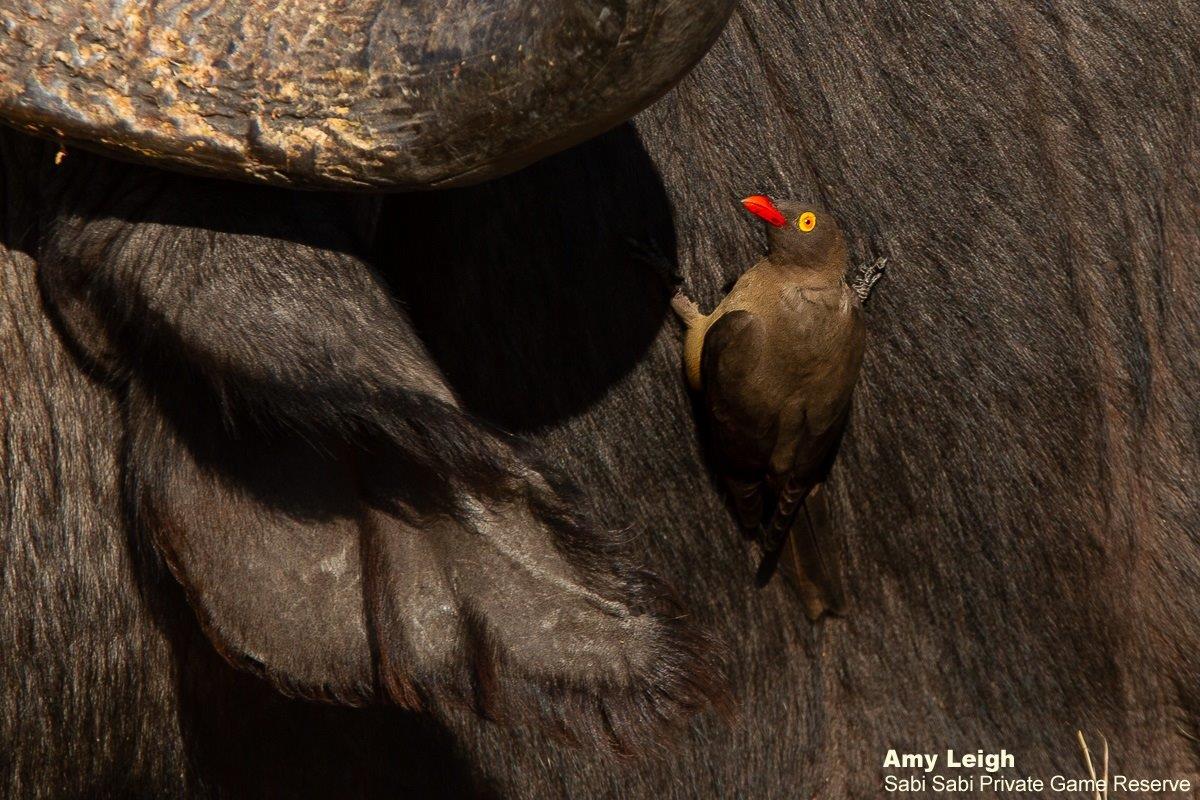
Most of their diet comprises of food found on the host itself, except for hawking the odd insect which is disturbed from its post by the movement of the host. The birds can be seen eating ticks, extracted by scissoring with the bill through the coat. They have also been observed picking in the ears as well as working at wounds. This could potentially benefit the animal because the activity at a wound will encourage flow of fresh blood to the area, as well as potentially the removal of infected tissue and insect larvae.
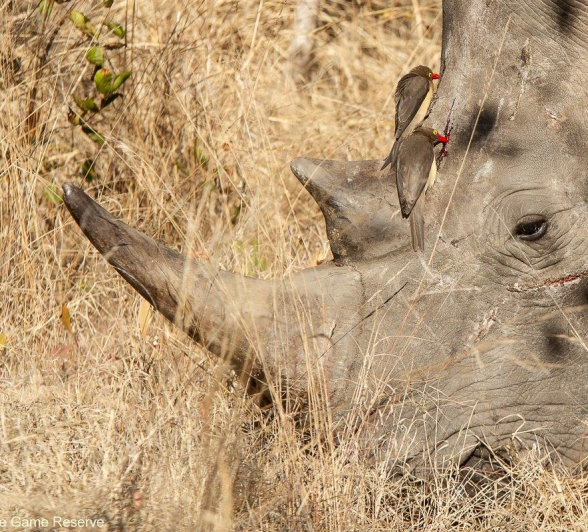
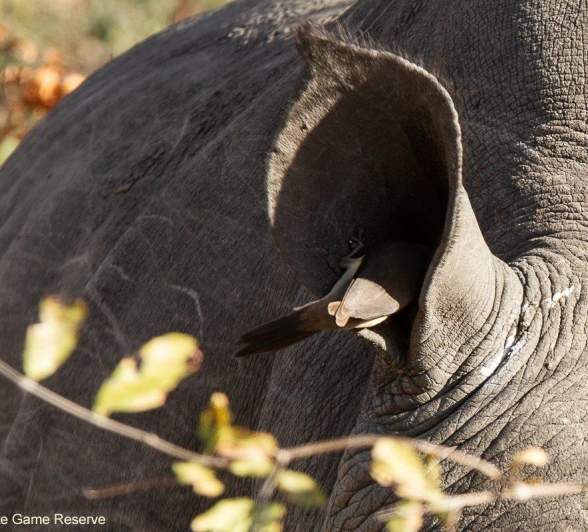
The young of both species are duller in colouration, with a dark brown bill that will gradually take on the bright hue of the adult after about 2 months and being in full form by about 7 months old. At this time, you often see the youngsters sticking close to the adults following them from one host to the next or staying on hosts in close proximity to each other. They are believed to regularly, yet not always, practice cooperative breeding, most noticeably in the Red-billed Oxpeckers, which is where members of the previous clutch of chicks will remain with their parents to help provide parental care for the clutch to follow.
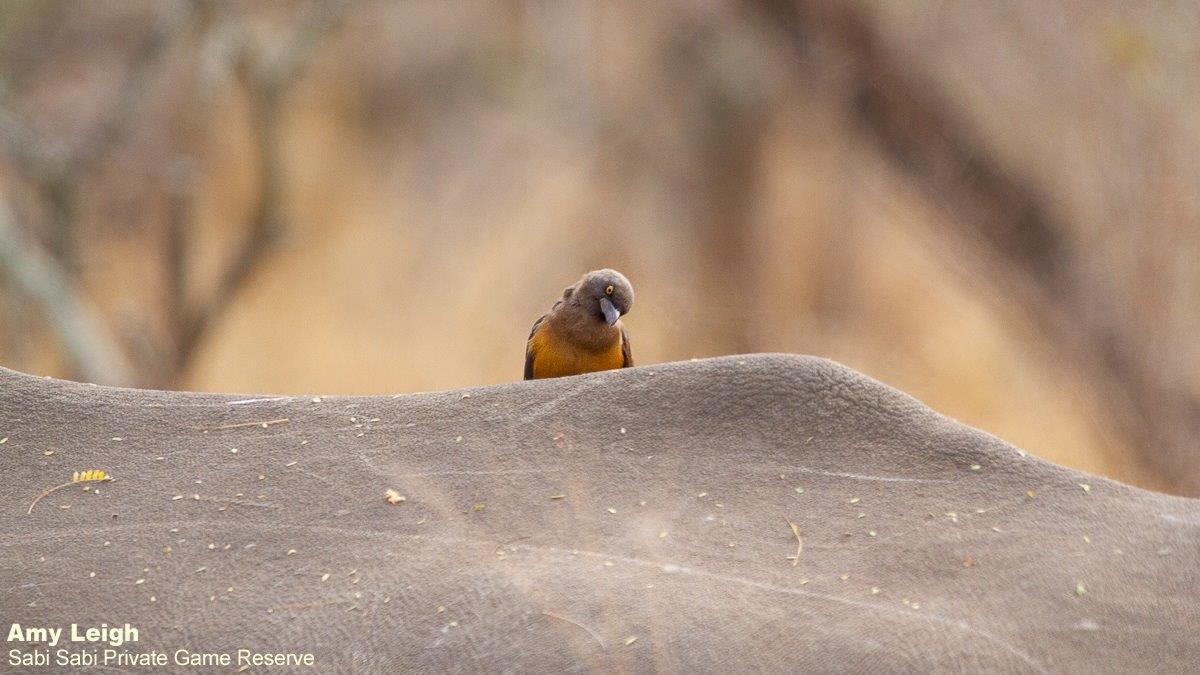
In this type of cooperative system, there are many benefits to both the individuals and the species. The survival rate of each brood is increased because there are more individuals providing food to the chicks, not only the parents themselves. There is also the additional benefit of safety in numbers, allowing for individuals to feed from all the nooks and crannies of the large herbivores, where there is not much opportunity for vigilance, and have confidence that while one feeds there is a good probability that another individual from the group is scanning for potential threats.
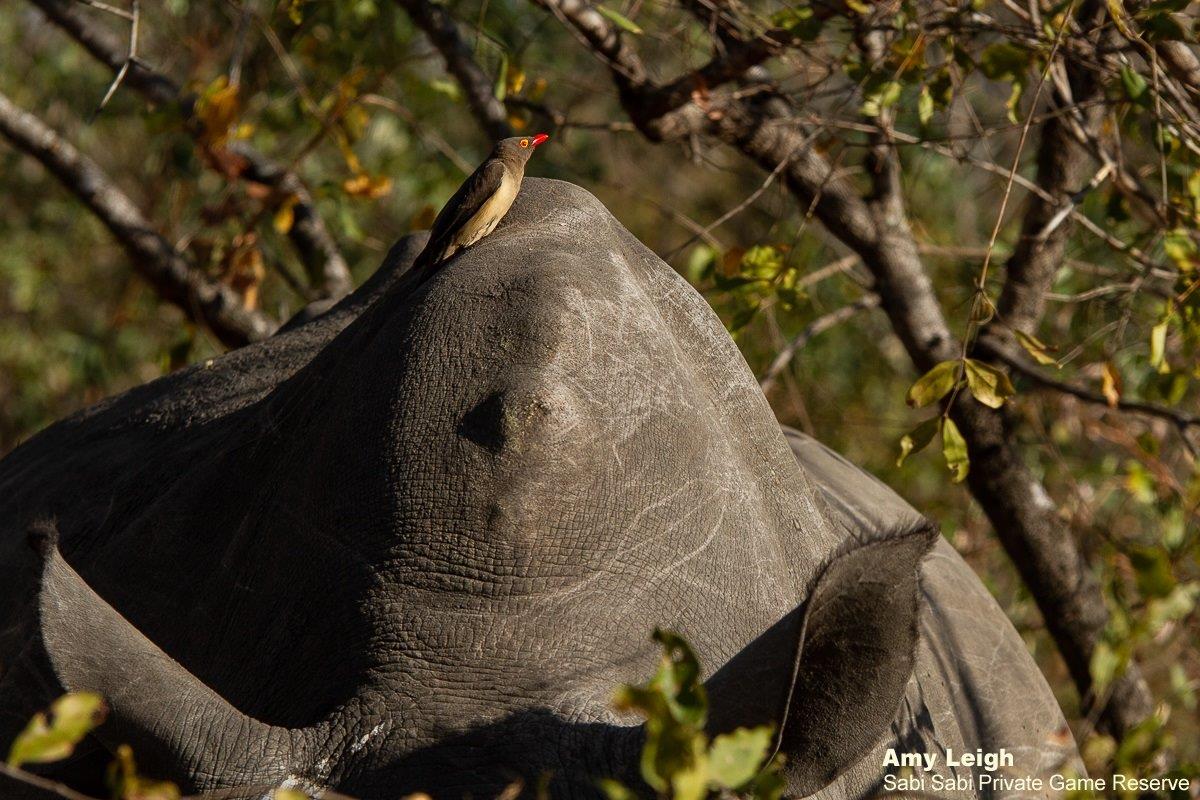
One can often hear the constant chatter between individuals of these little groups, this allows the group members to keep contact with other members and should there be a threat in the vicinity, it will let off a warning call, which catches everyone’s attention. Even as they fly, they vocalise, moving from one herd of animals to the next, or locating their hosts for the day as they descend from their roosting sites, always keeping contact with one another.
This is where we appreciate their social structure, this constant chattering, even when in flight, provides us with a secret warning as we move through the bush, a sign of herbivores to be found. So next time you go on a walk lead by a trails guide, you know why they stop and take heed of the ‘chip-chirrrrr’ in the distance.






